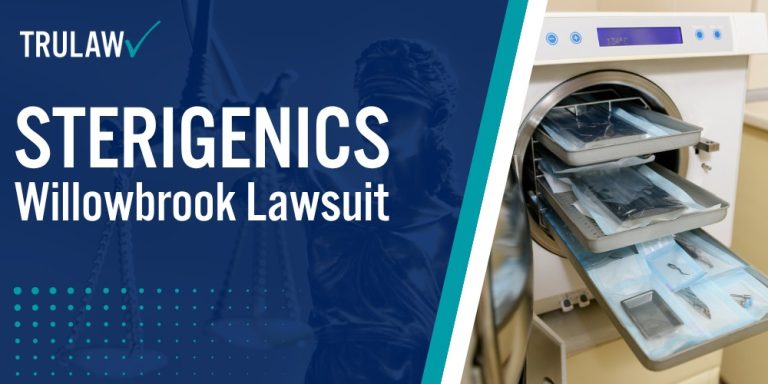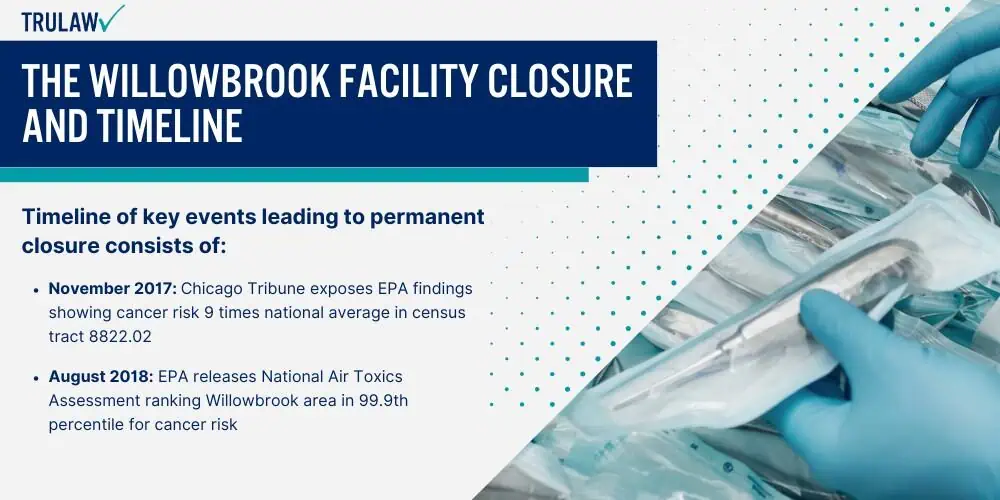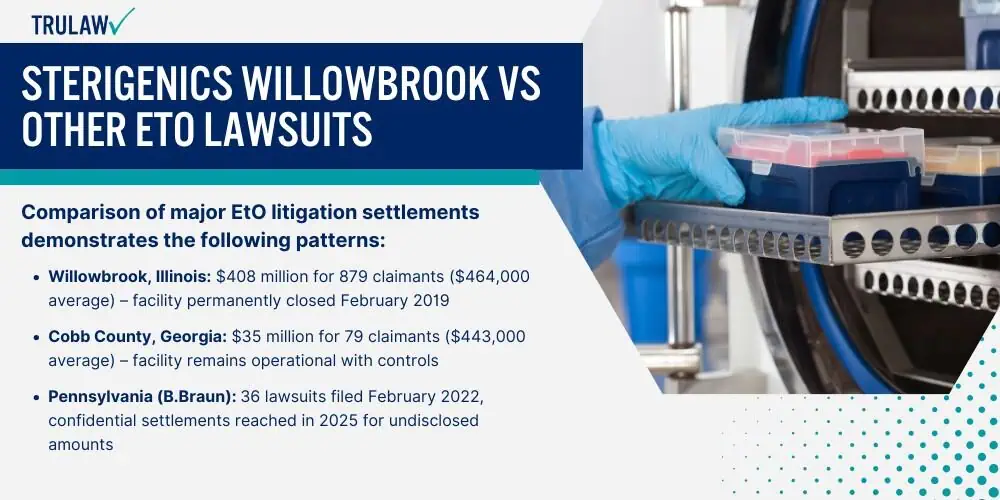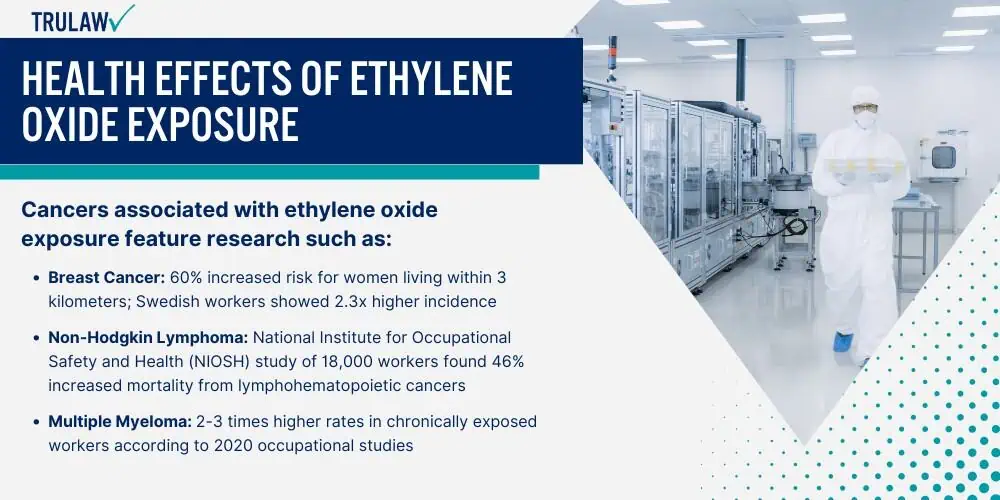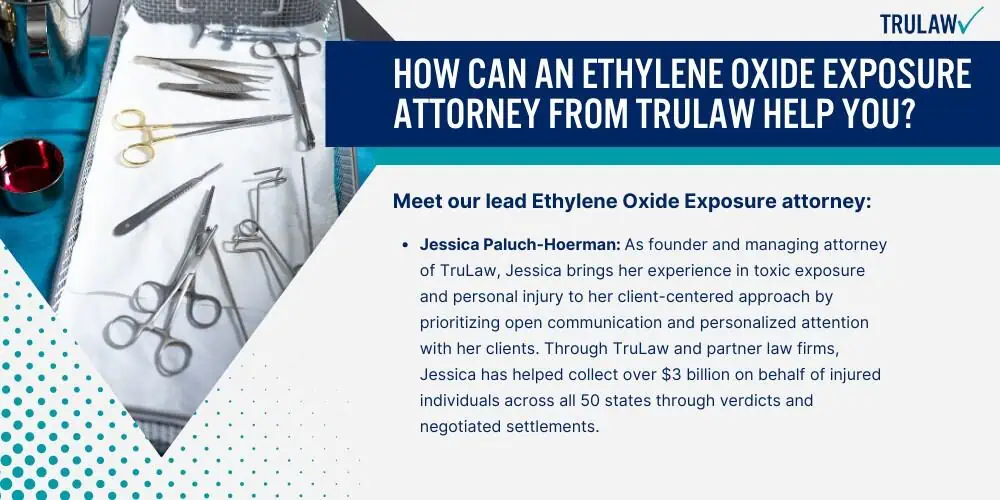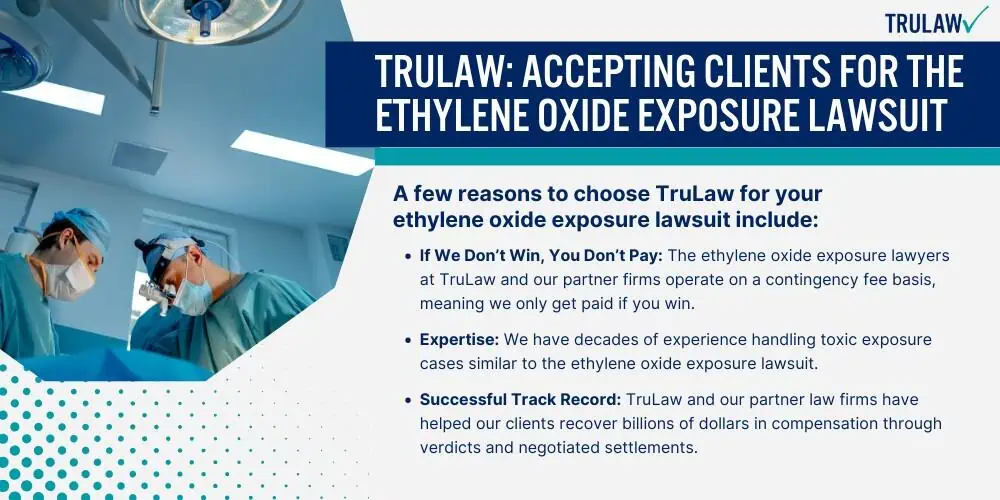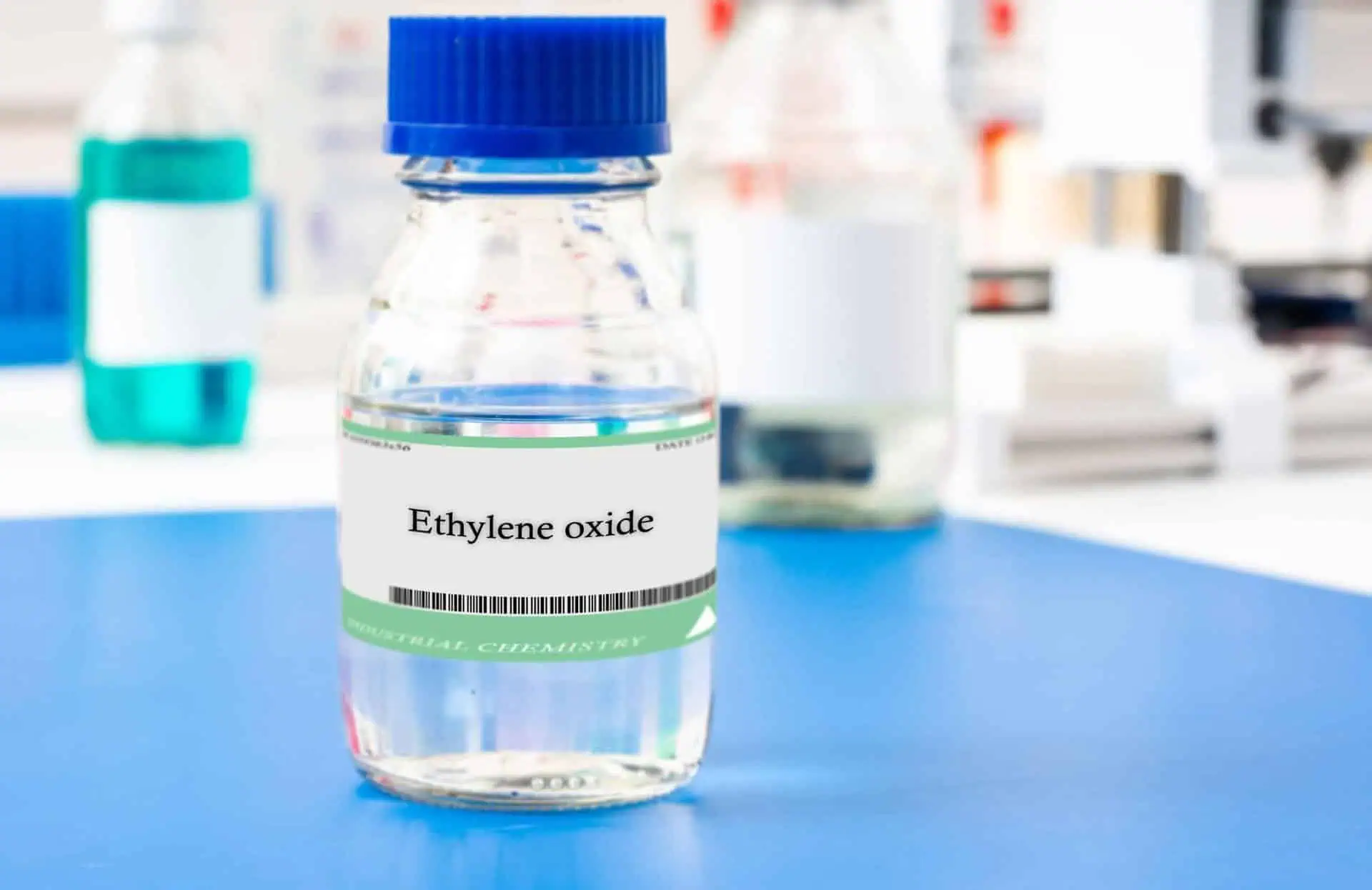Establishing a strong claim for toxic exposure from the Willowbrook facility requires comprehensive documentation of your residential proximity to 7775 Quincy Street and medical records confirming a cancer diagnosis linked to ETO exposure.
The Environmental Protection Agency’s air monitoring data from 2018 revealed that the Willowbrook Sterigenics facility posed increased cancer risks to surrounding communities, with cancer rates exceeding acceptable thresholds by up to ten times the national average.
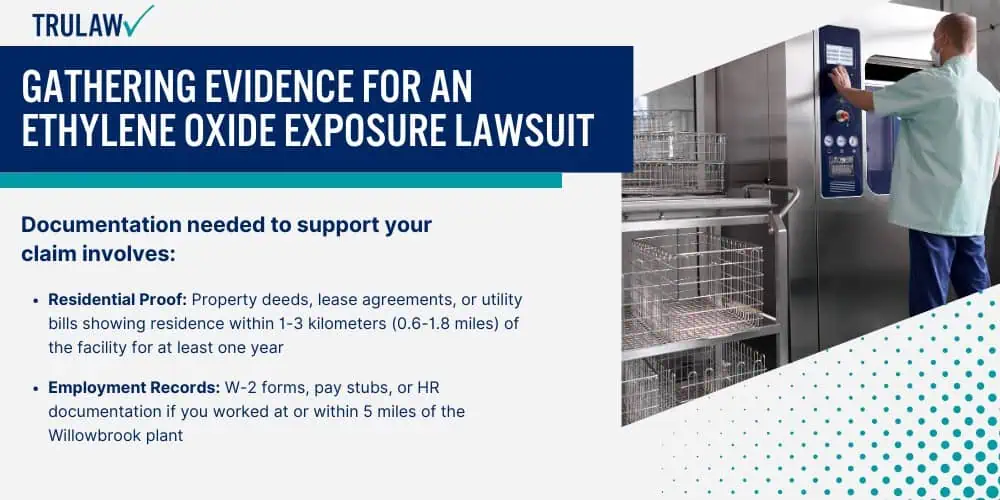
Documentation needed to support your claim involves:
- Residential Proof: Property deeds, lease agreements, or utility bills showing residence within 1-3 kilometers (0.6-1.8 miles) of the facility for at least one year
- Employment Records: W-2 forms, pay stubs, or HR documentation if you worked at or within 5 miles of the Willowbrook plant
- Medical Documentation: Pathology reports confirming cancer diagnosis, particularly for breast cancer (60% increased risk), leukemia, or lymphoma
- Address History: School enrollment records showing children attended schools within the high-risk zone (99.9th percentile for cancer risk)
- Exposure Timeline: Documentation spanning 1984-2019, when the facility released 17,000-33,000 pounds of ethylene oxide annually before 1999
- Witness Statements: Notarized affidavits from neighbors documenting health impacts in the community
- Photo Evidence: Dated photographs or videos establishing proximity to 7775 Quincy Street during operational years
Your attorney will use EPA monitoring data and expert testimony to establish that hazardous emissions from Willowbrook operations created an elevated cancer risk for those in the surrounding area.
The stronger your documentation of both exposure duration and medical diagnosis, the more compelling your case becomes.
Damages in Sterigenics Ethylene Oxide Lawsuits
Victims who developed cancer or other serious health effects from ethylene oxide exposure may recover substantial compensation for both economic and non-economic damages through litigation against Sterigenics.
A Cook County jury awarded Sue Kamuda $363 million in September 2022, including $38 million in compensatory damages and $325 million in punitive damages, demonstrating the potential value of these claims for those harmed by the company’s hazardous emissions.
Recoverable damages in ethylene oxide cases encompass both immediate and long-term impacts, including past and future medical expenses for cancer treatment, lost wages and diminished earning capacity, and compensation for pain and suffering endured during treatment and recovery.
Courts also recognize emotional distress and mental anguish, loss of enjoyment of life and normal activities, and in cases of willful corporate misconduct, substantial punitive damages designed to punish and deter such behavior.
For families who lost loved ones to cancer, wrongful death damages provide compensation for both economic losses and the immeasurable loss of companionship.
The $363 million jury verdict awarded to Susan Kamuda represents one specific case outcome and is not indicative of typical results.
Each case is unique, and outcomes depend on individual facts and circumstances.
If you or a loved one lived near the Willowbrook Sterigenics facility and developed cancer after exposure to ethylene oxide emissions, you may be entitled to compensation.
Contact TruLaw using the chat on this page to receive an instant case evaluation and determine whether you qualify to file an Ethylene Oxide Lawsuit today.
